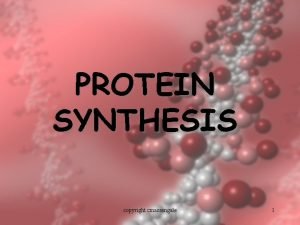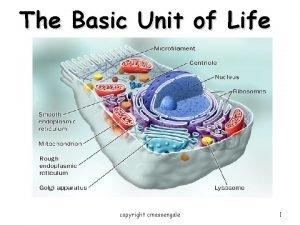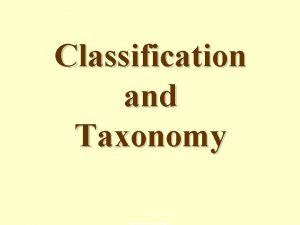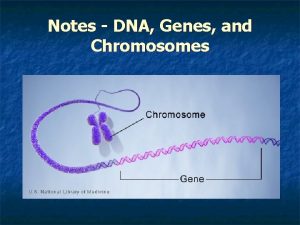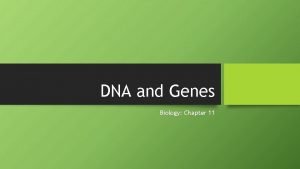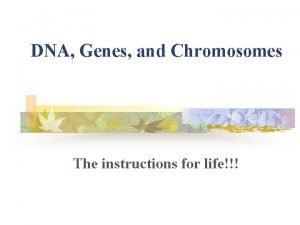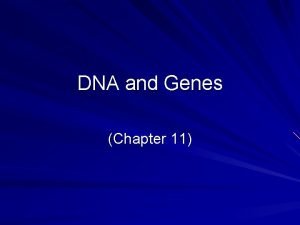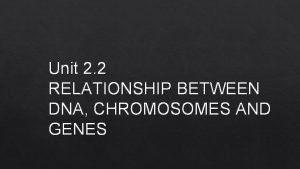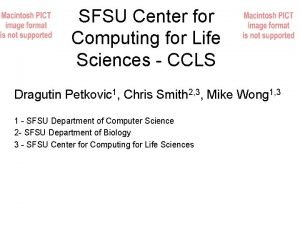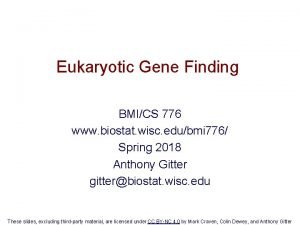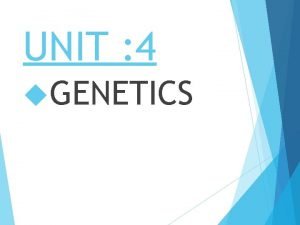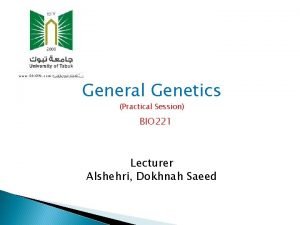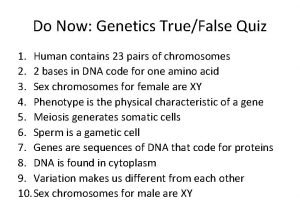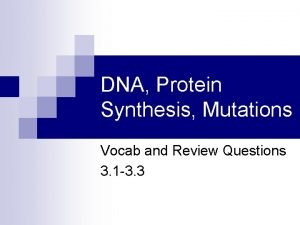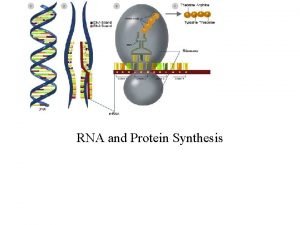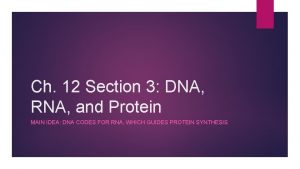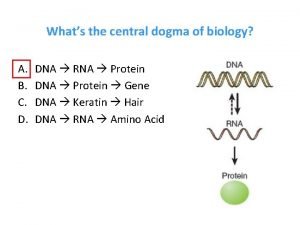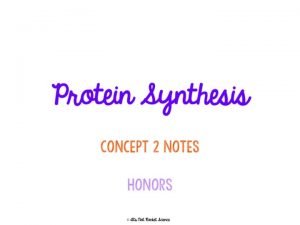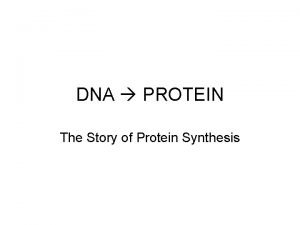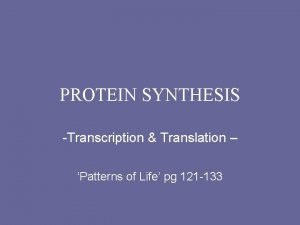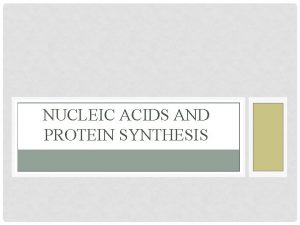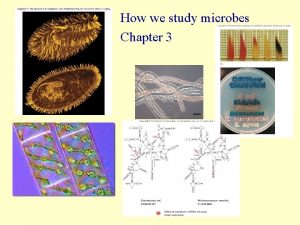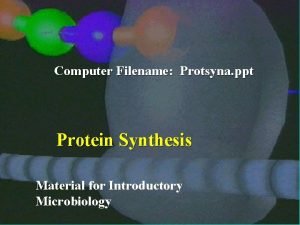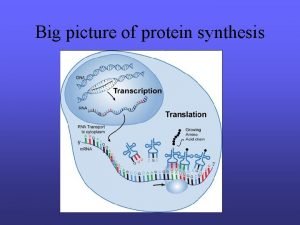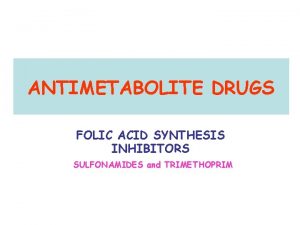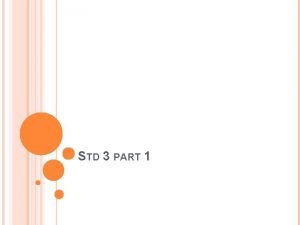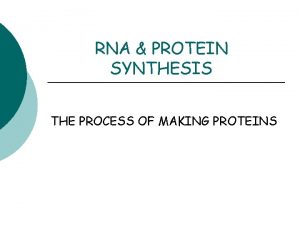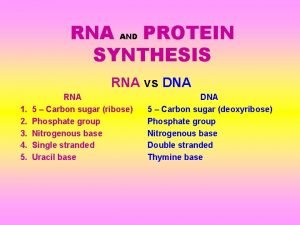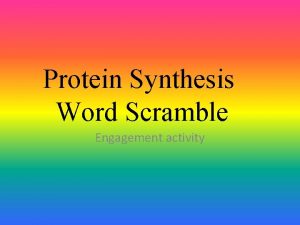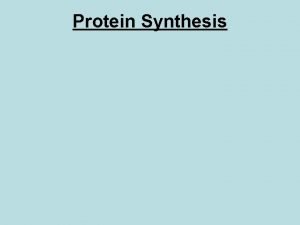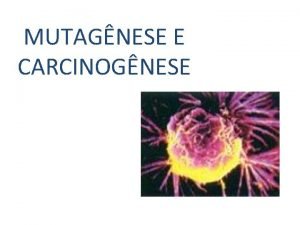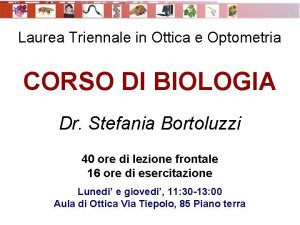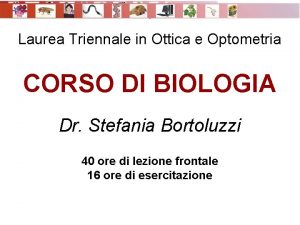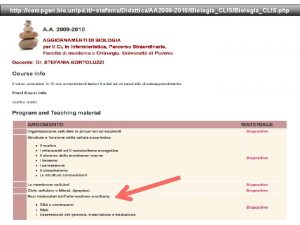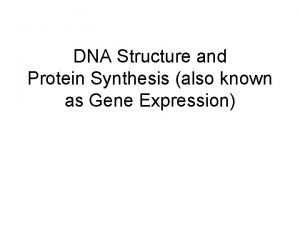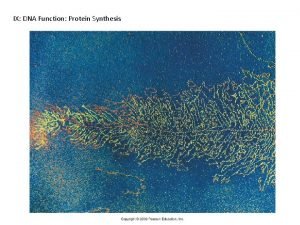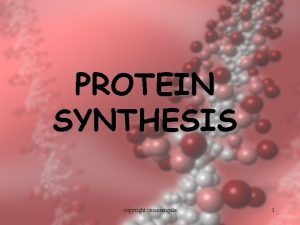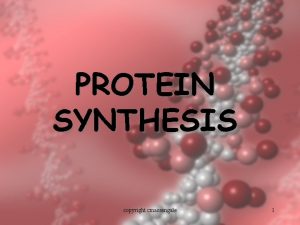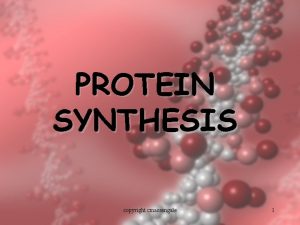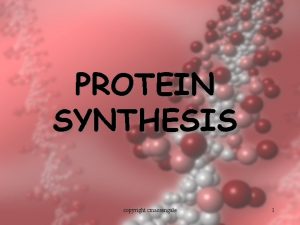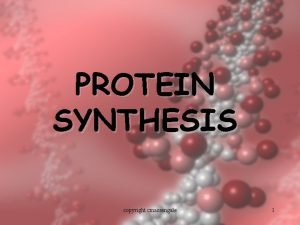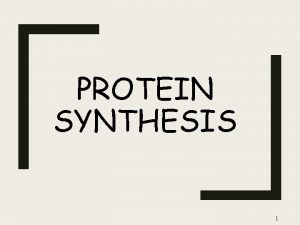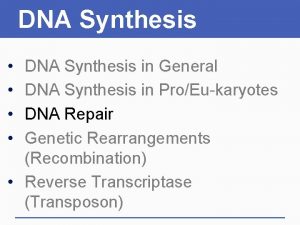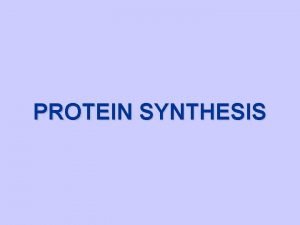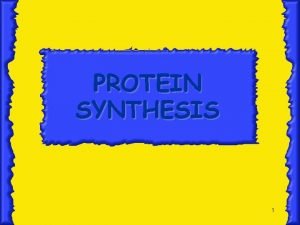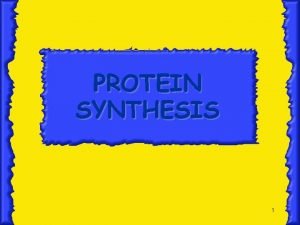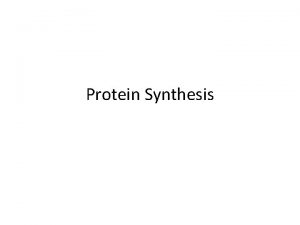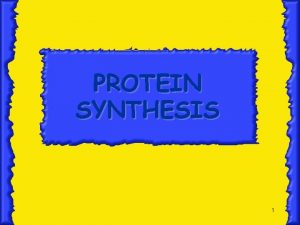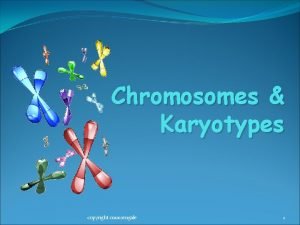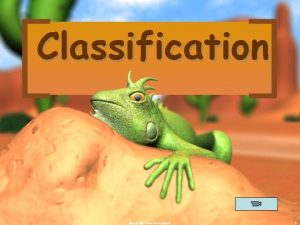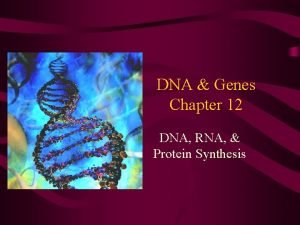PROTEIN SYNTHESIS copyright cmassengale 1 DNA and Genes
























































- Slides: 56

PROTEIN SYNTHESIS copyright cmassengale 1

DNA and Genes copyright cmassengale 2

DNA • DNA contains genes, sequences of nucleotide bases • These Genes code for polypeptides (proteins) • Proteins are used to build cells and do much of the work inside cells copyright cmassengale 3

Genes & Proteins § Proteins are made of amino acids linked together by peptide bonds § 20 different amino acids exist copyright cmassengale 4

Amino Acid Structure copyright cmassengale 5

Polypeptides • Amino acid chains are called polypeptides copyright cmassengale 6

DNA Begins the Process • DNA is found inside the nucleus • Proteins, however, are made in the cytoplasm of cells by organelles called ribosomes • Ribosomes may be free in the cytosol or attached to the surface of rough ER copyright cmassengale 7

Starting with DNA • DNA ‘s code must be copied and taken to the cytosol • In the cytoplasm, this code must be read so amino acids can be assembled to make polypeptides (proteins) • This process is called PROTEIN SYNTHESIS copyright cmassengale 8

RNA copyright cmassengale 9

Roles of RNA and DNA • DNA is the MASTER PLAN • RNA is the BLUEPRINT of the Master Plan copyright cmassengale 10

RNA Differs from DNA • RNA has a sugar ribose DNA has a sugar deoxyribose copyright cmassengale 11

Other Differences • • RNA contains the base uracil (U) DNA has thymine (T) RNA molecule is single-stranded DNA is doublestranded copyright cmassengale DNA 12

Structure of RNA copyright cmassengale 13

. Three Types of RNA • Messenger RNA (m. RNA) copies DNA’s code & carries the genetic information to the ribosomes • Ribosomal RNA (r. RNA), along with protein, makes up the ribosomes • Transfer RNA (t. RNA) transfers amino acids to the ribosomes where proteins are synthesized copyright cmassengale 14

Messenger RNA • Long Straight chain of Nucleotides • Made in the Nucleus • Copies DNA & leaves through nuclear pores • Contains the Nitrogen Bases A, G, C, U ( no T ) copyright cmassengale 15

Messenger RNA (m. RNA) • Carries the information for a specific protein • Made up of 500 to 1000 nucleotides long • Sequence of 3 bases called codon • AUG – methionine or start codon • UAA, UAG, or UGA – stop 16 codons copyright cmassengale

Ribosomal RNA (r. RNA) • r. RNA is a single strand 100 to 3000 nucleotides long • Globular in shape • Made inside the nucleus of a cell • Associates with proteins to form ribosomes • Site of protein Synthesis copyright cmassengale 17

The Genetic Code • A codon designates an amino acid • An amino acid may have more than one codon • There are 20 amino acids, but 64 possible codons • Some codons tell the ribosome to stop translating copyright cmassengale 18

The Genetic Code • Use the code by reading from the center to the outside • Example: AUG codes for Methionine copyright cmassengale 19

Name the Amino Acids • • • GGG? UCA? CAU? GCA? AAA? copyright cmassengale 20

Remember the Complementary Bases On DNA: A-T C-G On RNA: A-U C-G copyright cmassengale 21

Transfer RNA (t. RNA) • Clover-leaf shape • Single stranded molecule with attachment site at one end for an amino acid • Opposite end has three nucleotide bases called the anticodon copyright cmassengale 22

Transfer RNA amino acid attachment site U A C anticodon copyright cmassengale 23

Codons and Anticodons • The 3 bases of an anticodon are complementary to the 3 bases of a codon • Example: Codon ACU Anticodon UGA copyright cmassengale UGA ACU 24

Transcription and Translation copyright cmassengale 25

Pathway to Making a Protein DNA m. RNA t. RNA (ribosomes) Protein copyright cmassengale 26

Protein Synthesis § The production or synthesis of polypeptide chains (proteins) § Two phases: Transcription & Translation § m. RNA must be processed before it leaves the nucleus of eukaryotic cells copyright cmassengale 27

DNA RNA Protein Nuclear membrane DNA Transcription Eukaryotic Cell Pre-m. RNA Processing m. RNA Ribosome Translation Protein copyright cmassengale 28

Transcription • The process of copying the sequence of one strand of DNA, the template strand • m. RNA copies the template strand • Requires the enzyme RNA Polymerase copyright cmassengale 29

Template Strand copyright cmassengale 30

Question: § What would be the complementary RNA strand for the following DNA sequence? DNA 5’-GCGTATG-3’ copyright cmassengale 31

Answer: • DNA 5’-GCGTATG-3’ • RNA 3’-CGCAUAC-5’ copyright cmassengale 32

Transcription • During transcription, RNA polymerase binds to DNA and separates the DNA strands • RNA Polymerase then uses one strand of DNA as a template to assemble nucleotides into RNA copyright cmassengale 33

Transcription • Promoters are regions on DNA that show where RNA Polymerase must bind to begin the Transcription of RNA • Called the TATA box • Specific base sequences act as signals to stop • Called the termination signal copyright cmassengale 34

RNA Polymerase copyright cmassengale 35

m. RNA Processing • After the DNA is transcribed into RNA, editing must be done to the nucleotide chain to make the RNA functional • Introns, non-functional segments of DNA are snipped out of the chain copyright cmassengale 36

m. RNA Editing • Exons, segments of DNA that code for proteins, are then rejoined by the enzyme ligase • A guanine triphosphate cap is added to the 5” end of the newly copied m. RNA • A poly A tail is added to the 3’ end of the RNA • The newly processed m. RNA can then leave the nucleus copyright cmassengale 37

Result of Transcription CAP New Transcript copyright cmassengale Tail 38

m. RNA Transcript • m. RNA leaves the nucleus through its pores and goes to the ribosomes copyright cmassengale 39

Translation • Translation is the process of decoding the m. RNA into a polypeptide chain • Ribosomes read m. RNA three bases or 1 codon at a time and construct the proteins copyright cmassengale 40

Transcription Translation copyright cmassengale 41

Ribosomes • Made of a large and small subunit • Composed of r. RNA (40%) and proteins (60%) • Have two sites for t. RNA attachment --- P and A copyright cmassengale 42

Step 1 - Initiation • m. RNA transcript start codon AUG attaches to the small ribosomal subunit • Small subunit attaches to large ribosomal subunit m. RNA transcript copyright cmassengale 43

Ribosomes Large subunit P Site A Site m. RNA Small subunit A U G C U A C U U C G copyright cmassengale 44

Step 2 - Elongation • As ribosome moves, two t. RNA with their amino acids move into site A and P of the ribosome • Peptide bonds join the amino acids copyright cmassengale 45

Initiation aa 2 aa 1 2 -t. RNA 1 -t. RNA anticodon hydrogen bonds U A C A U G codon G A U C U A C U U C G A copyright cmassengale m. RNA 46

Elongation peptide bond aa 1 aa 3 aa 2 3 -t. RNA 1 -t. RNA anticodon hydrogen bonds U A C A U G codon 2 -t. RNA G A U C U A C U U C G A copyright cmassengale m. RNA 47

aa 1 peptide bond aa 3 aa 2 1 -t. RNA 3 -t. RNA U A C (leaves) 2 -t. RNA A U G G A A G A U C U A C U U C G A m. RNA copyright cmassengale Ribosomes move over one codon 48

aa 1 peptide bonds aa 2 aa 4 aa 3 4 -t. RNA 2 -t. RNA A U G 3 -t. RNA G C U G A A C U U C G A A C U m. RNA copyright cmassengale 49

aa 1 peptide bonds aa 4 aa 2 aa 3 2 -t. RNA 4 -t. RNA G A U (leaves) 3 -t. RNA A U G G C U G A A C U U C G A A C U m. RNA copyright cmassengale Ribosomes move over one codon 50

aa 1 peptide bonds aa 5 aa 2 aa 3 aa 4 5 -t. RNA U G A 3 -t. RNA 4 -t. RNA G A A G C U A C U U C G A A C U m. RNA copyright cmassengale 51

peptide bonds aa 1 aa 5 aa 2 aa 3 aa 4 5 -t. RNA U G A 3 -t. RNA G A A 4 -t. RNA G C U A C U U C G A A C U m. RNA copyright cmassengale Ribosomes move over one codon 52

aa 4 aa 5 Termination aa 199 aa 3 primary structure aa 2 of a protein aa 200 aa 1 200 -t. RNA A C U terminator or stop codon C A U G U U U A G m. RNA copyright cmassengale 53

End Product –The Protein! • The end products of protein synthesis is a primary structure of a protein • A sequence of amino acid bonded together by peptide bonds aa 2 aa 1 aa 3 aa 4 aa 5 aa 199 copyright cmassengale aa 200 54

Messenger RNA (m. RNA) start codon m. RNA A U G G G C U C C A U C G G C A U A A codon 1 protein methionine codon 2 codon 3 glycine serine codon 4 isoleucine codon 5 codon 6 glycine alanine codon 7 stop codon Primary structure of a protein aa 1 aa 2 aa 3 aa 4 cmassengale peptidecopyright bonds aa 5 aa 6 55

copyright cmassengale 56
 Dna rna protein synthesis homework #2 dna replication
Dna rna protein synthesis homework #2 dna replication Dna rna and protein synthesis study guide
Dna rna and protein synthesis study guide Linked genes and unlinked genes
Linked genes and unlinked genes Polygenic inheritance
Polygenic inheritance Cmassengale
Cmassengale Cmassengale
Cmassengale Genus species
Genus species Genepattern
Genepattern Chromosome vs dna vs gene
Chromosome vs dna vs gene Chapter 11 dna and genes
Chapter 11 dna and genes Dna, genes and chromosomes relationship
Dna, genes and chromosomes relationship Dna and genes chapter 11
Dna and genes chapter 11 What is the relationship between dna chromosomes and genes
What is the relationship between dna chromosomes and genes Non protein coding genes
Non protein coding genes Non protein coding genes
Non protein coding genes Genes chromosome
Genes chromosome Dna genes
Dna genes Dna genes
Dna genes Dna chromosomes genes diagram
Dna chromosomes genes diagram Section 12-3 rna and protein synthesis
Section 12-3 rna and protein synthesis 4 steps of protein synthesis
4 steps of protein synthesis Protein synthesis and mutations
Protein synthesis and mutations Protein synthesis and mutations
Protein synthesis and mutations Section 12 3 rna and protein synthesis
Section 12 3 rna and protein synthesis Chapter 12 section 3 dna rna and protein
Chapter 12 section 3 dna rna and protein Totipotent cells
Totipotent cells Messenger rna codons
Messenger rna codons Cell restaurant analogy
Cell restaurant analogy Protein synthesis splicing
Protein synthesis splicing Protein synthesis bbc bitesize
Protein synthesis bbc bitesize Dna cookbook analogy
Dna cookbook analogy Elongation
Elongation Rna types
Rna types Protein synthesis
Protein synthesis Protein synthesis
Protein synthesis Synthesis
Synthesis Protein synthesis animation mcgraw hill
Protein synthesis animation mcgraw hill Molecular genetics and biotechnology
Molecular genetics and biotechnology Translation biology
Translation biology Protein synthesis
Protein synthesis Protein synthesis
Protein synthesis Protein synthesis ppt
Protein synthesis ppt Transcription and translation picture
Transcription and translation picture Sulfonamides mechanism of action
Sulfonamides mechanism of action Which best summarizes the process of protein synthesis?
Which best summarizes the process of protein synthesis? Concept map of protein synthesis
Concept map of protein synthesis Protein synthesis
Protein synthesis Protein synthesis scramble
Protein synthesis scramble Process of protein synthesis
Process of protein synthesis Dna nucleotide
Dna nucleotide Protein synthesis
Protein synthesis Protein synthesis
Protein synthesis Protein synthesis
Protein synthesis Protein synthesis
Protein synthesis Protein synthesis
Protein synthesis Protein synthesis
Protein synthesis What provides instructions for protein synthesis
What provides instructions for protein synthesis




